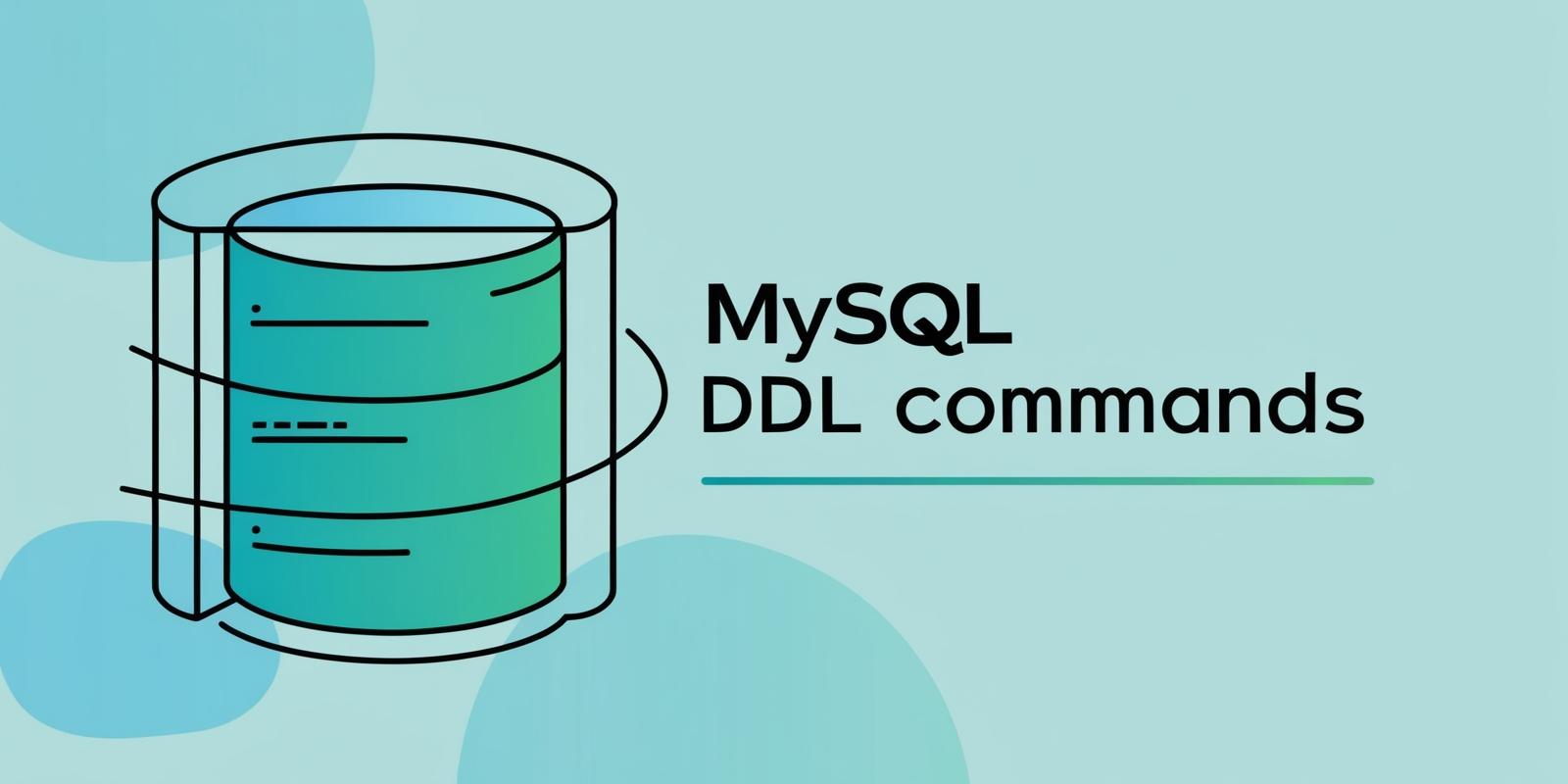When working with databases, it's essential to know how to structure and manage your data effectively. In MySQL, Data Definition Language (DDL) commands are the backbone of creating and modifying database structures. These commands allow you to define tables, databases, indexes, and much more, providing the foundation for all other data operations.
In this article, we’ll dive deep into the world of MySQL DDL commands, explaining what they are, how they work, and their key features. Whether you’re a beginner or an experienced developer, this guide will help you understand DDL commands in MySQL and give you the tools to work confidently with them.
 What is DDL (Data Definition Language)?
What is DDL (Data Definition Language)?
Data Definition Language refers to a set of SQL commands used to define and manage database structures. These commands are used for creating, altering, and dropping databases and tables. Unlike DML (Data Manipulation Language) commands, which handle actual data manipulation (like inserting, updating, and deleting data), DDL commands focus on the schema — the structure of your database.
 1. CREATE DATABASE
1. CREATE DATABASE
The CREATE DATABASE command is used to create a new database. When you want to store your data, you first need to create a database to contain it.
CREATE DATABASE my_database;
You can also specify additional options, like the character set and collation for the database:
CREATE DATABASE my_database CHARACTER SET utf8mb4 COLLATE utf8mb4_unicode_ci;
This ensures your database supports a wide range of characters and performs well with multilingual data.
 2. CREATE TABLE
2. CREATE TABLE
The CREATE TABLE command is one of the most important DDL commands. It’s used to define the structure of a table in your database. A table contains columns, each of which can store specific types of data (e.g., integers, strings, dates).
CREATE TABLE users ( id INT PRIMARY KEY, name VARCHAR(100), email VARCHAR(100), created_at TIMESTAMP DEFAULT CURRENT_TIMESTAMP );
In this example, the users table has four columns: id, name, email, and created_at. The id column is set as the primary key, which ensures each row in the table is unique.
You can also add constraints to ensure data integrity, like NOT NULL (to prevent null values), UNIQUE (to ensure values are unique), and DEFAULT (to set default values).
 3. ALTER TABLE
3. ALTER TABLE
Sometimes, your database schema needs to change as your application evolves. The ALTER TABLE command allows you to modify an existing table's structure, such as adding, modifying, or deleting columns.
Adding a column:
ALTER TABLE users ADD age INT;
Modifying a column:
ALTER TABLE users MODIFY email VARCHAR(150);
Dropping a column:
ALTER TABLE users DROP COLUMN age;
You can also use ALTER TABLE to add or drop constraints, change the table’s storage engine, or rename the table.
 4. DROP DATABASE
4. DROP DATABASE
If you no longer need a database, the DROP DATABASE command will completely remove it from your MySQL server. Be careful with this command, as it deletes the database and all its contents.
DROP DATABASE my_database;
This command cannot be undone, so always double-check that you’re not accidentally deleting important data.
 5. DROP TABLE
5. DROP TABLE
Similar to the DROP DATABASE command, DROP TABLE is used to remove a table from a database entirely. All the data within the table is lost as well.
DROP TABLE users;
Again, use this command with caution, as once the table is dropped, it cannot be recovered unless you have backups.
 6. CREATE INDEX
6. CREATE INDEX
Indexes are used to speed up data retrieval operations by providing a quick way to look up data. The CREATE INDEX command allows you to create an index on one or more columns in a table.
CREATE INDEX idx_email ON users(email);
This creates an index on the email column of the users table, making it faster to search for users by their email addresses.
You can also create unique indexes using the UNIQUE keyword, which ensures that all values in the indexed column(s) are unique.
 7. DROP INDEX
7. DROP INDEX
To remove an index from a table, you can use the DROP INDEX command.
DROP INDEX idx_email ON users;
This will remove the idx_email index from the users table.
 8. TRUNCATE TABLE
8. TRUNCATE TABLE
The TRUNCATE TABLE command is used to remove all rows from a table but keep its structure intact. It’s faster than using DELETE because it doesn’t log individual row deletions.
TRUNCATE TABLE users;
Note that this command is irreversible — once the data is removed, it cannot be recovered without backups.
 9. RENAME TABLE
9. RENAME TABLE
If you want to change the name of an existing table, you can use the RENAME TABLE command:
RENAME TABLE old_table_name TO new_table_name;
This command allows you to easily rename your tables without having to drop and recreate them.
 Conclusion
Conclusion
MySQL offers a rich set of DDL commands that allow you to define and manage your database schema effectively. Whether you're creating databases, defining tables, or modifying structures, these commands form the core of any MySQL-based project. By mastering DDL commands like CREATE, ALTER, DROP, and others, you’ll have the power to design databases that are efficient, scalable, and secure.









